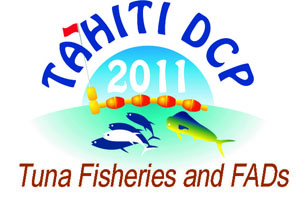Hawaii Community FADs: strategic locations, data collection, and cooperative research
1 : Western Pacific Regional Fishery Management Council
(WESPAC)
1164 Bishop Street, 1400 Honolulu, Hawaii 96813 USA -
États-Unis
2 : Pelagic Fisheries Research Program, University of Hawaii
* : Corresponding author
Coconut Island, Kaneohe Hawaii -
États-Unis
For generations, native Hawaiian fishermen have targeted tuna at traditional ko'a and tended these fishing areas by placing stones or food in distinct locations to attract and retain food and forage fish like opelu (Decapterus macarellus). Since 1980, the State of Hawaii fish aggregation device (FAD) Program has been maintaining a network of anchored FADs to promote recreational fishing opportunities. These modern FADs, which consist of steel buoys anchored in depths between 200 and 3,000 meters have been used in Hawaii for decades as an effective method to provide public access to pelagic species harvested by recreational, subsistence and commercial fishermen. The State FAD Program consists of 52 permitted locations easily accessible to coastal fishermen operating from harbors and launching ramps throughout the main Hawaiian Islands. In some cases, these locations may not be as productive as some areas further offshore and do they address the interests of some isolated communities for shallow-water FADs for subsistence needs. In recent years, commercial troll and handline fishermen in Hawaii have been deploying private FADs (PFADs) within State (0-3 nm) and Federal (3-200 nm) waters around Hawaii to address these concerns. All of these PFADs have been illegally deployed without appropriate authorization from the U.S. Coast Guard or, if applicable, other authorizing agencies. PFADs are constructed to minimize detection that can create hazards to navigation and owners exercise illegal proprietary rights over fishing on or near their FADs. The proliferation of PFADs in Hawaii has raised concern as to what effects, if any, these FADs may have on the seasonal movement patterns of tuna; the rate or duration of retention; and their impact on traditional fishing grounds and ko'as. FADs are popular because they can reduce search time for fish and minimize fuel costs but restricted access has contributed to user-group conflicts and market competition. The Western Pacific Regional Fishery Management Council (Council) recognizes the potential benefits of legally established, freely accessible, optimally located and maintained FADs. The Council also recognizes their ability to supplement the State FAD program currently experiencing funding shortfalls while providing community benefits through strategically located FADs. In 2006, the Council worked with fishermen from a rural community in East Maui, Hawaii to establish the first legally established community FAD in the State. Based on the success of that project, the Council has worked with other communities in Hawaii to deploy additional community FADs. This paper describes the design, data collection, cooperative research, community benefits and challenges associated with developing community FADs.

 PDF version
PDF version
